Over the last couple of days I have been thinking about what the church looks like right now. People are quite unsettled by the fact that they cannot gather together. For some, this situation is a direct threat to their freedoms. For others, it is a necessary health restriction. However, whether or not you believe it is important to gather in church buildings full of germs and aerosol virus droplets flying around is not the point. I believe that there is a bigger conversation that we need to engage and work on.
Continue readingTheology of the City
A Bored Church
I recently read a few books by Byung-Chul Han. I have to say that the experience was quite enriching. He describes our society in ways that make it simple to understand. Not that his ideas are simple, or that the topics that he deals with aren’t complex. However, his capacity to create seamless connections between different authors, ideas, and our reality is quite amazing. The one book that stood out to me is The Burnout Society.
Continue readingA Hell of Our Own Making Part 2
In my previous post, I explored a few ideas about the hell we make for ourselves as humans. This perspective may seem a bit pessimistic because it does not allow for a supernatural intervention of an all-powerful God that comes down and cleans the slate. It is in our hands as humans to change the current course of things. This degree of responsibility is of utmost importance since the possibility for change and transformation is in our hands. (If you have not read the previous post pleas hit the link and come back)
Continue readingA Hell of Our Own Making Part 1
At this point, we all have been in different kinds of quarantine for at least three months. In Guatemala we are on our 97th day of quarantine. Many things are still uncertain. The one thing that I know for sure is that we, humanity, are facing very strange and challenging times. Some people have even said that we are facing the possibility of extinction and we are not even aware of it.
However, I believe we are also living in beautiful times. For the first time in many centuries, we have the possibility of reimagining ourselves as a species and turn things around.
Continue readingApocalyptic Pandemic?
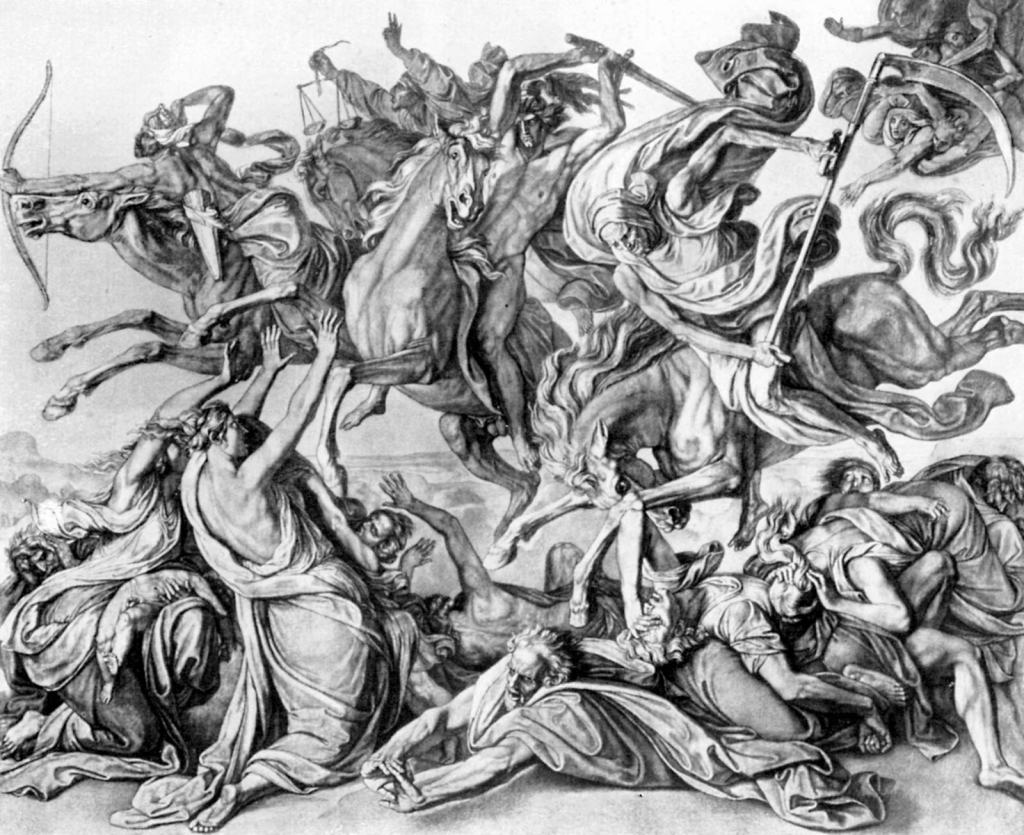
When I was a little kid, growing up under the pews of the church, I remember hearing about the book of Revelations in the Bible. In Spanish it is called Apocalipsis which literally means, the apocalypse. Every time someone talked about it I had the chills. I felt as if the four riders and the dragon of seven heads were going to show up the next day and everything was going to be over. The one thing that got me over the fear of that was that I was taught that I was one of the chosen ones to not experience it.
Continue readingReimagining Our Humanity in Times of Pandemic
I have not written a single post for the last three and a half years. The reason being that I was working on my PhD. So, now that I have taken the dissertation as far as I can for evaluation, I have a bit more time to write about different things.
First, let me tell you a little bit about what will come out in the dissertation. After thorough bibliographic and field research I am proposing a concept, term, set of practices, or beliefs if I may say so, called human catechism. The concept in and of itself is quite simple. It comprises two elements. Firstly, the human part, which is I would say kind of self explanatory. Secondly, catechism, which makes reference to a set of faith practices that are passed down from generation to generation. So, in simple words, human catechism is a set of faith practices that teach us how to reimagine our humanity amid present times. Human catechism responds to the question, how do we stay human and teach others to be human and humane amid our times?
Theological Formation For Today
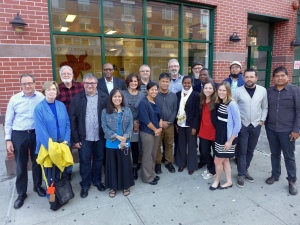 Last week I was invited to participate in a consultation in Theological Formation for the Peace of the City. This event was hosted by City Seminary of New York, coordinated by INFEMIT, with the attendance of people from around the Globe. We took some time to write and share our ideas in regards of what theological formation needs to be today. We all agreed that theological formation is key to leadership development, and that’s why I decided I would share with you what I think the objectives of theological formation should be in my City, Guatemala City. Continue reading
Last week I was invited to participate in a consultation in Theological Formation for the Peace of the City. This event was hosted by City Seminary of New York, coordinated by INFEMIT, with the attendance of people from around the Globe. We took some time to write and share our ideas in regards of what theological formation needs to be today. We all agreed that theological formation is key to leadership development, and that’s why I decided I would share with you what I think the objectives of theological formation should be in my City, Guatemala City. Continue reading
Engaging the City Incarnationally
I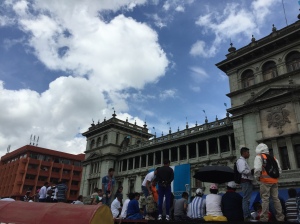 n the last few years I have had the opportunity to enter into a global conversation. I have sat around with leaders from different countries, and continents. This group of friends is what we call The Urban Training Collaborative, which is a group of training hubs in different cities around the world. As we sit together, around a table where nobody is greater than one another, we have come to ask one question. How do we engage our city in a way that brings transformation? At the beginning, the answer to this question didn’t come up as easy as we thought it would. It took us hours, months, even years of staying in conversation with each other to arrive to the conclusions we have found in the last few years. This process has helped us realize we have “three ways of doing.” Continue reading
n the last few years I have had the opportunity to enter into a global conversation. I have sat around with leaders from different countries, and continents. This group of friends is what we call The Urban Training Collaborative, which is a group of training hubs in different cities around the world. As we sit together, around a table where nobody is greater than one another, we have come to ask one question. How do we engage our city in a way that brings transformation? At the beginning, the answer to this question didn’t come up as easy as we thought it would. It took us hours, months, even years of staying in conversation with each other to arrive to the conclusions we have found in the last few years. This process has helped us realize we have “three ways of doing.” Continue reading
Meeting Old Friends
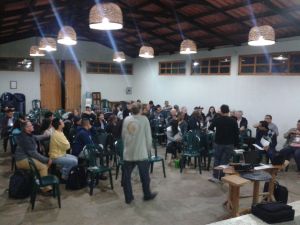 For the last couple years I have been a part of a conversation that is making me rethink the way I see the world and the work that I do in my city. This conversation has taken me into a journey that is pushing the boundaries of my beliefs. Thankfully, I have been in this conversation with a group of people who have walked with me as I develop new ways of seeing my City.
For the last couple years I have been a part of a conversation that is making me rethink the way I see the world and the work that I do in my city. This conversation has taken me into a journey that is pushing the boundaries of my beliefs. Thankfully, I have been in this conversation with a group of people who have walked with me as I develop new ways of seeing my City.
On September 15th I got the chance to meet with most of the people who have walked alongside me in this conversation. We gathered together in a place outside Guatemala City for three days and engaged in a conversation that took us through three perspectives to work in our city. The perspectives were: abundance, from below, and Peacemaking. We took a day to explore each one of these perspectives, and the implications they have on the work we do in our cities.
We used Guatemala City as our lab to experiment with these perspectives. Interestingly, all of those in our group who were not from Guatemala kept their cities in mind as they explored how Guatemalans see Guatemala City from a perspective of abundance, a perspective from below, and a perspective of peacemaking.
In the end we were about 70 people sharing with each other what we have learned in the last 10 years about the work we do to bring social and spiritual renewal in our cities. I would like to think that all of us are back working in our cities refreshed, and recharged. I know the work we have ahead of us is hard. However, I found a huge relief in knowing that there is at least another 70 people who are working for the spiritual and social renewal of cities through Central America and the Caribbean.
A Trip to Haiti: day 2 – 3
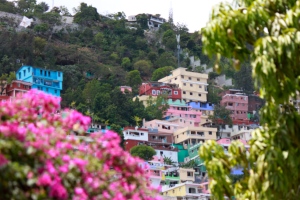 Visiting Haiti and conversing with Haitian leaders has opened my eyes. Being in Port-au-prince has given me a new perspective and vision for my work in Guatemala. Today, we started a theological conversation about the way we see the City. The title of the training is “The City of Joy” and we will explore together what it means to live, love and laugh in the midst of our city. Our first stop in the conversation took us to the soul of who Haitians are. I cannot say that I understand Haitian culture, that would be arrogant. What I can say is that through exploring in conversation with Haitian leaders the way they see their city, I am able to see the tip of the iceberg. Our conversation today was based on the notion of the Symbolic Universe. This idea comes from a series of sociologists and religious thinkers like, Beningo Beltrand, Peter Berger, Thomas Luckman and John Searle among others. In a brief way, the symbolic universe is the soul of people. It is the symbols that give identity to “what” we are, “who” we are, and “why” we are. According to Beltrand in the Theology of the Inarticulate There is three different levels that give us identity. The first one is the civitas, the “what” of the people, In other words, the body. Here we find the physical environment of a country/city/community, land, architecture and climate. The way we usually respond to what we see in this area is “relief efforts”. In this area we build houses after an earthquake, give food, build bridges and so on.
Visiting Haiti and conversing with Haitian leaders has opened my eyes. Being in Port-au-prince has given me a new perspective and vision for my work in Guatemala. Today, we started a theological conversation about the way we see the City. The title of the training is “The City of Joy” and we will explore together what it means to live, love and laugh in the midst of our city. Our first stop in the conversation took us to the soul of who Haitians are. I cannot say that I understand Haitian culture, that would be arrogant. What I can say is that through exploring in conversation with Haitian leaders the way they see their city, I am able to see the tip of the iceberg. Our conversation today was based on the notion of the Symbolic Universe. This idea comes from a series of sociologists and religious thinkers like, Beningo Beltrand, Peter Berger, Thomas Luckman and John Searle among others. In a brief way, the symbolic universe is the soul of people. It is the symbols that give identity to “what” we are, “who” we are, and “why” we are. According to Beltrand in the Theology of the Inarticulate There is three different levels that give us identity. The first one is the civitas, the “what” of the people, In other words, the body. Here we find the physical environment of a country/city/community, land, architecture and climate. The way we usually respond to what we see in this area is “relief efforts”. In this area we build houses after an earthquake, give food, build bridges and so on.
Secondly, we have the polis, the mind of the people. In this area we try to understand the who of the people. Here we see the norms of the people, language, food, rites, music, religion, values, work and humor. And, the way we usually respond to this area is with “development”. And the third one is the Symbolic Universe, in other words, the soul of the people. In this area we try to understand the why of the people. We seek for the defining symbols and stories that give meaning and identity to a people. And the way we respond to problems in this area is through “advocacy”. Through the conversation we had with the Haitian leaders who attended our training I came to realize that I know very little about the symbols that give me identity as a Guatemalan. I was able to see that because it took me a few seconds to think about examples that could help the participants to find their own symbols. It is not that I haven’t look for the symbols. It is that I have stopped looking for the symbols that rise from within the communities I serve. Thereby, I am very often guilty of systemic misunderstanding.
Systemic Misunderstanding is one of the most dangerous mistakes in any kind of relief, development, or advocacy effort. If we do not understand the symbols we won’t communicate our message in a way that will make sense. When we are in a systemic misunderstanding we do not understand how the processes and systems of a culture work. Therefore, we are inefficient in relieving, developing and advocating for and with the people we serve. In addition, we become authoritative and frustrated because our ideas don’t work. In the end, we hurt people in our desire of doing good. All that to say that we had a great conversation. We talked about this misunderstanding and the implications it has for our leadership among vulnerable communities.
At the end of the day I kept the conversation going with Valerie, our colleague in Haiti. We talked about the symbolic universe and how it holds Haiti’s identity. Something that was really sad and interesting at the same time was the interpretation of Haitians about the earthquake in 2010. According to Valerie, the earthquake shattered a lot of the symbols of Haitian culture, and also created new symbols that changed the identity of who Haitians are. those symbols both, shattered and new, make it really hard for Haitians to recover and rebuild their identity. As another of the Haitian leaders said, “it is hard to see a ‘city of joy’ (the name of the intensive training we are teaching) when all we see is pain and poverty, when the symbols that make us who we are come from shattered buildings, hunger, violence and corruption” As I finish my day I can only think about the pain and suffering of our peoples in Latin America and the Caribbean. I think of the historical difficulties that have slowed down our development as nations. In the end, that is why we try to dialogue about what it means to live, laugh and love in the midst of our cities.